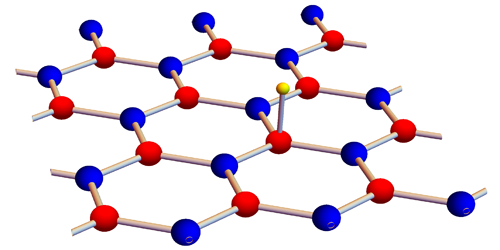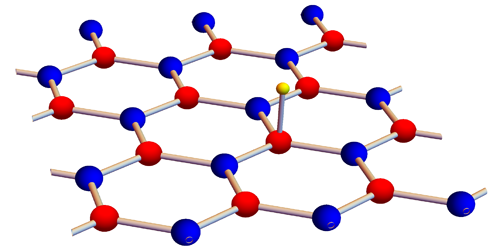How Defects Keep Graphene Cool
Material imperfections, such as an atom out of place or a boundary between crystallites, usually reduce a material’s ability to dissipate heat. Now Jian Feng Kong at the Massachusetts Institute of Technology, Cambridge, and colleagues predict a mechanism via which impurity defects—foreign atoms—in graphene can instead increase heat dissipation. Analyzing the impact of such defects on the local emission of phonons by the electrons, the team found that the defects can act like a resonant cavity for phonons, amplifying phonon emission up to tenfold. This cooling mechanism could be turned on and off by an applied voltage, enabling controllable cooling in graphene-based nanodevices.
The heat dissipation mechanism discovered by Kong and colleagues takes advantage of a process analogous to the so-called Purcell effect—the enhanced emission of photons by an atom trapped in a resonant optical cavity. Here, instead of an atom in a cavity, an electron is trapped by a defect. When an electronic transition of the defect is resonant with the energy of the trapped electron, the electron emits phonons more efficiently. This enhanced emission facilitates heat dissipation in the region around the defect.
The team predicts that this cooling mechanism could be tuned by changing the graphene sheet’s Fermi energy, which determines the energy of the electrons that interact with the defect. This tuning could be achieved experimentally by applying a voltage to the material. The researchers say that this Purcell-like mechanism could explain recently measured heat-dissipation maps of graphene that indicate that electrons lose most of their energy around defects.
This research is published in Physical Review B.
–Katherine Wright
Katherine Wright is a Contributing Editor for Physics.





